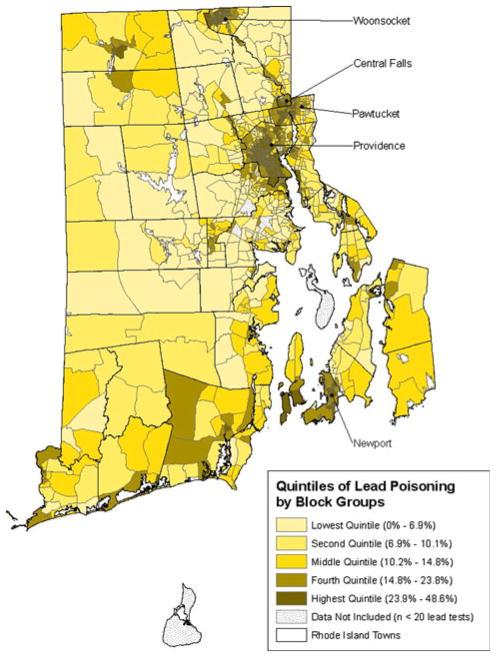Child Lead Poisoning
Neighborhood Characteristics and the Burden of Lead Poisoning

Old housing also had an important impact on the risk of lead poisoning. The proportion of children with an elevated blood lead level increased from 7% among children living in block groups in the lowest quintile for pre-1950 housing to 27% for those in the highest quintile for pre-1950 housing. The adjusted odds ratio was 1.64 for the highest quintile of poverty and 1.77 for the highest quintile of pre-1950 housing.
The findings of this large, statewide study demonstrate the powerful impact of where children live on the risk of lead poisoning. The findings have important implications for understanding the problem of lead poisoning and for planning primary prevention programs.
Vivier, P.M., Hauptman, M., Weitzen, S.H., Bell, S., Quilliam, D.N. and Logan, J.R., 2011. The important health impact of where a child lives: neighborhood characteristics and the burden of lead poisoning. Maternal and child health journal, 15(8), pp.1195-1202.